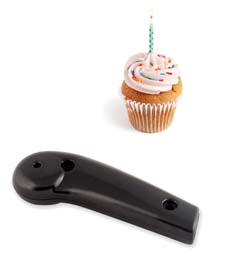 The problem with gift-giving is finding something appropriate to give, meaning, something that the recipient will actually like, and let’s them know you spent time thinking about what they want. You can always give something fairly easy, and thoughtless, like a gift card, but a well-thought-out gift is always better.
The problem with gift-giving is finding something appropriate to give, meaning, something that the recipient will actually like, and let’s them know you spent time thinking about what they want. You can always give something fairly easy, and thoughtless, like a gift card, but a well-thought-out gift is always better.
Many Revere Ware owners are passionate about their cookware, and have been using it for decades. Do you know someone like this in your life? So why not give the Revere Ware lover in your life new parts for their cookware. If they are anything like the Revere Ware lovers I know, they will love it!
Furthermore, given that new Bakelite and other parts for Revere Ware cookware were not available for quite some time before we started selling them in 2009, many people have given up looking for new parts and just assume they will have to live with their faded and cracked Bakelite parts, leaky pressure cooker gaskets, and rusty hardware. Your gift will not only make them happy, it will probably be a surprise too!
